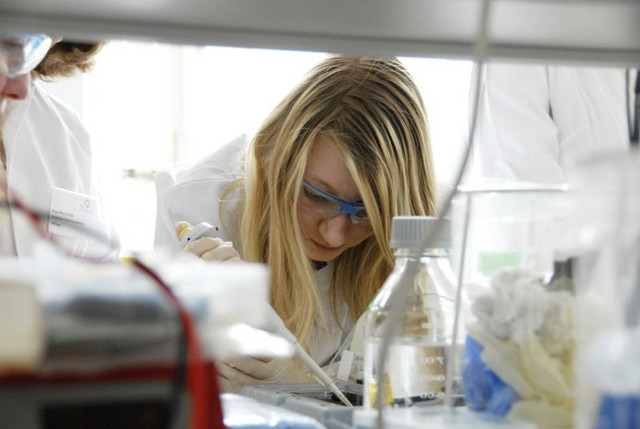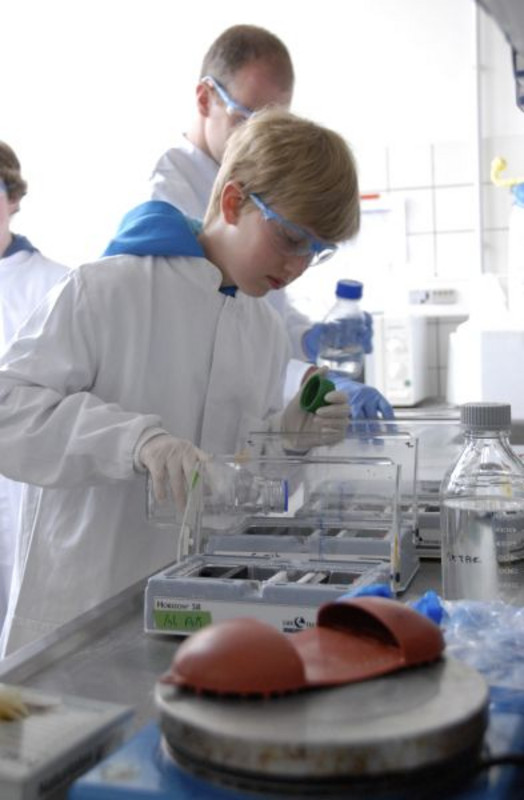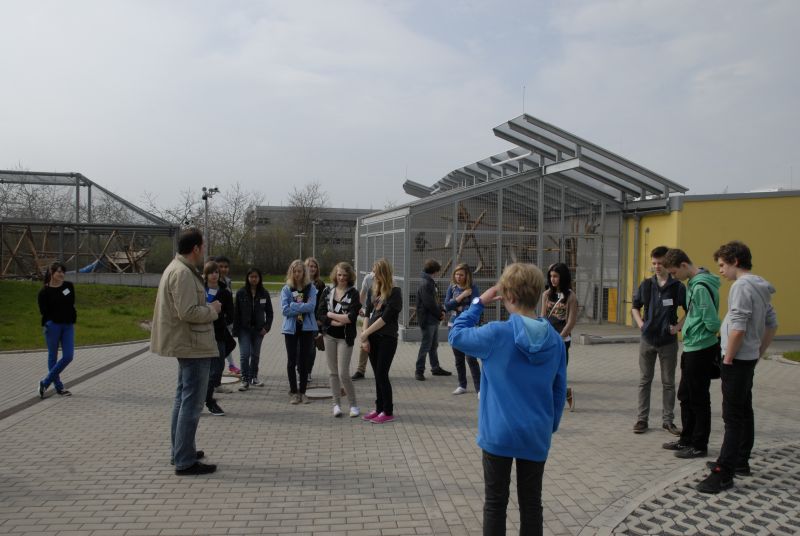Virus DNA seen under UV-light
Eighteen schoolgirls and boys from the 8th to 10th grade visited the DPZ at the "Boys' and Girls' Day" on April 25th. Two girls even came from Kassel to get to know the job profiles in biology and biomedical science at our institute. The nationwide "Boys' and Girls' Day" offers teenagers annually the chance to gain new insights for their career plans.
After an introduction to the German Primate Center the teenagers visited the primate husbandry with colony manager Uwe Schönmann. The youngsters had really been looking forward to this part of the program. During the one hour guided tour they had the chance to see black-and-white ruffed lemurs, ring-tailed lemurs, hamadryas baboons, and rhesus macaques at close range. They also found out interesting facts about the social system of primates and the job of an animal keeper.
During the second part of the day the students tried out science themselves. Together with Adeline Heurich and Florian Wrensch from the Infection Biology Unit the teenagers separated a buffer solution that symbolized a virus-DNA in the laboratory and learned how to use pipettes and agarose gel. Afterwards, Florian Wrensch showed a typical linear pattern of real virus DNA under UV-light and explained how scientists recognize which virus they are dealing with.
With Ricarda Ahlert and Natalie Nazarenus from the Research Group Neurobiology the students learned how difficult the tasks are which the neuroscientist teach our rhesus macaques. The research group is investigating the sensorimotor system of the hand in order to develop neuroprosthetics in the future. For the start the students watched a live experiment with a rhesus macaque using different grip types after electric signals on a monitor. Then they were grouped in pairs and participated in an experiment themselves: One played the part of the monkey and the other the part of an animal trainer teaching the monkey to learn specific tasks such as sitting down on a chair by the help of clicker signals. The clicker training is based on "positive reinforcement training": If the monkey acts in the desired way it receives a reward and the trainer clicks. Later, the monkey associates the sound with a reward and performs the task when it only hears the sound. "It's amazing that the monkeys can learn all this without explanation! It's not easy at all," said Lena (15) from the Max-Planck-Gymnasium in Göttingen.
At the end of the Boys' and Girls' Day all schoolboys and girls gave us a positive feedback: Ten students liked the day at our institute "very much" and eight liked it "much".



